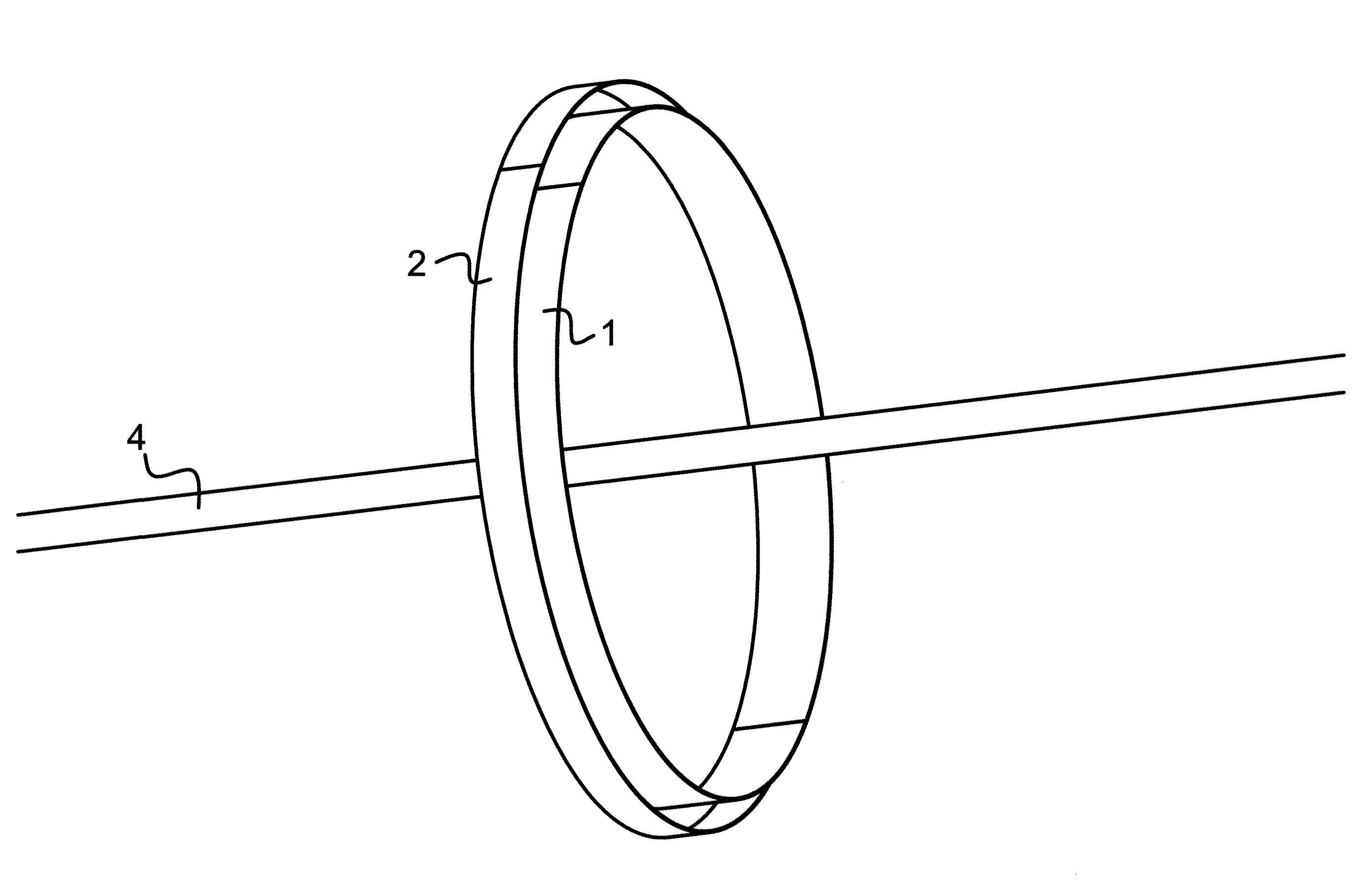System and device for measuring voltage in a conductor
a technology of conductor and voltage measurement, which is applied in the direction of moving iron instruments, instruments, base elements, etc., can solve the problems of a serious problem for the lack of voltage sensors, and impeded development of such a line-mounted power line monitor
- Summary
- Abstract
- Description
- Claims
- Application Information
AI Technical Summary
Problems solved by technology
Method used
Image
Examples
Embodiment Construction
[0016]The system and device of the present invention derive a measure of voltage from the electrostatic field surrounding a conductor. A conductor having the same voltage as earth-ground will not have a measureable electrostatic field surrounding it. If the conductor has a voltage different than earth-ground, it will have an electric charge which produces a non-uniform field surrounding it. This field will have greater intensity closer to the conductor and lower intensity farther away. An electrode closer to the conductor will pick up more charge than an equivalent electrode farther away, and the difference in charge pickup will be greater for higher voltages on the conductor with respect to earth-ground than for lower voltages with respect to earth-ground. Thus, by measuring the difference in charge pickup between two different electrodes at different distances from the conductor, one can derive a measure of the voltage with respect to earth-ground without requiring any actual conn...
PUM
 Login to View More
Login to View More Abstract
Description
Claims
Application Information
 Login to View More
Login to View More - R&D
- Intellectual Property
- Life Sciences
- Materials
- Tech Scout
- Unparalleled Data Quality
- Higher Quality Content
- 60% Fewer Hallucinations
Browse by: Latest US Patents, China's latest patents, Technical Efficacy Thesaurus, Application Domain, Technology Topic, Popular Technical Reports.
© 2025 PatSnap. All rights reserved.Legal|Privacy policy|Modern Slavery Act Transparency Statement|Sitemap|About US| Contact US: help@patsnap.com



